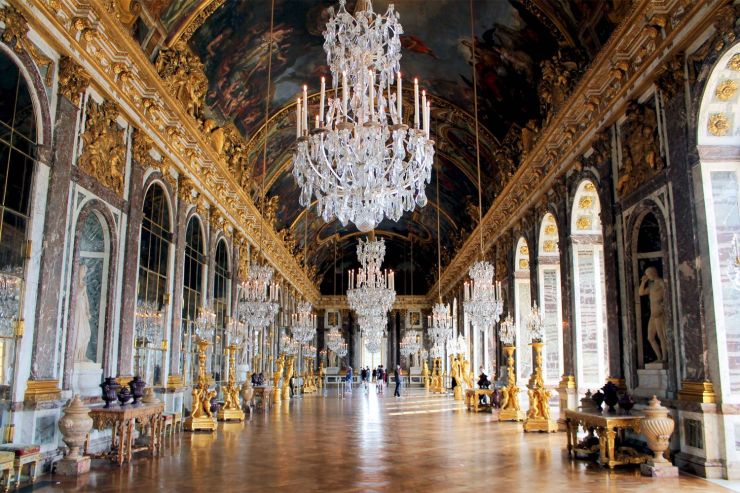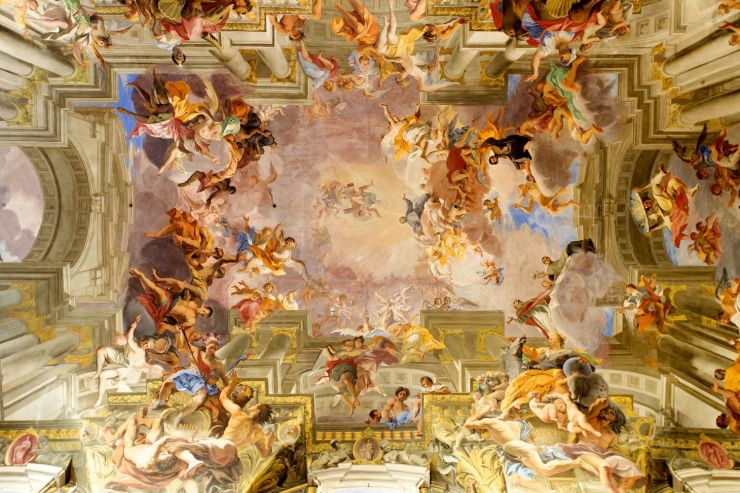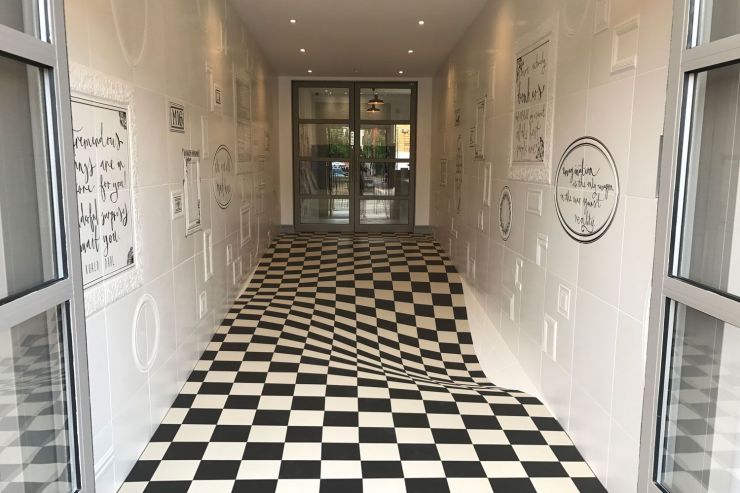Playing with perception
29. March 2023
Architecture and interior architecture can directly influence the way spaces or buildings are perceived and create one-of-a-kind experiences. Which gives them huge potential, in particular for trade show stands and the hospitality industry.
Architecture and interior architecture are about more than creating functional and aesthetically pleasing spaces. As interior architects, we tell stories, provoke emotions and shape experiences. And that is especially true for projects in the areas of trade shows, showrooms and hospitality.
There are different approaches to shaping the way people experience a space. One way to make a lasting impact is to play with perception and expectation. In this blog post we will explore inspiring examples of this from the past and the present.
The Sun King and the mirror
People have been playing with perception for centuries. Take the Sun King Louis XIV, who loved glass and in particular mirrors, which are an exceptionally good material for generating illusions. In the 73-metre-long Hall of Mirrors («Galerie des Glaces») in the Palace of Versailles, an astonishing 357 mirrors were installed opposite 17 huge windows overlooking the garden, allowing it to become part of the hall during the day and making the interior space feel larger at night.

Hall of Mirrors in the Palace of Versailles © Jessica Kantak Bailey (via Unsplash)
A farmhouse of printed glass
Since 2013, visitors to the Schijndel market square in the Netherlands have also been experiencing a play between interiors and exteriors in the shape of a farmhouse that is not a farmhouse. The «Glass Farm» by the Rotterdam-based architecture studio MVRDV (we wrote about another project by them in this blog post) houses offices, restaurants and shops.
The architects abstained from using traditional materials such as brick and wood in the construction of the building – at least not in their material form. Instead, the building is made from an 1800-square-metre glass envelope that was printed using a photorealistic digital printing process. On MVRDV’s website they talk about «augmented history». The Schijndel market square was severely damaged by bombs during WWII and has since undergone numerous enlargements and renovations.
The «Glass Farm» is 1.6 times larger than an actual farmhouse and, due to its outsize dimensions, symbolises the growth of the village into a city. Depending on the natural and interior lighting, the appearance of the glass envelope changes. And when it is dark outside and the interior of the «Glass Farm» is illuminated, it is most clearly a monument to the traditional farmhouse of the region.
Mirror, mirror … on the tree
Like the Glass Farm, the «Mirrorcube» of the Swedish Treehotel is another structure encased in glass, although the casing is made of mirror glass rather than printed glass. The cube, each of its edges 4-metres long, reflects its surroundings and thus becomes one with the forest. The «Mirrorcube» was designed by the Stockholm-based architects Tham & Videgård.
Trompe-l'œil: Heaven on Earth
In addition to glass and mirrors, the art of painting provides a multitude of possibilities to transform spaces and play with viewers’ perception. Trompe-l’œil, for example, is a painting technique that deceives the viewer into believing that a highly realistic two-dimensional representation is three dimensional and/or real.
Examples of such illusory wall and ceiling paintings can be found in many baroque churches. Domes were simulated with the help of painting, bringing heaven down to Earth, such as in the church of Sant’Ignazio di Loyola in Campo Marzio, Rome.

Ceiling fresco by Andrea Pozzo in the Sant’Ignazio church in Rome © Massimo Merlini (iStock)
However, the efficacy of the tromp-l’œil technique is neither limited to indoor use nor to the past: in the mural «US» by the Lucerne-based QueenKong (we have already written in-depth about the duo in this blog post), a building façade suddenly becomes multidimensional thanks to spray cans and paint rollers.
Colour games
The offices of the creative agency DDB in Prague also demonstrate the power of graphics and colours. A graphic colour concept for the walls, ceilings and floors immediately influences people’s experience of a space, with their perception of it changing based on their position and angle. The B2 Architecture office did the interior design for the project.
DDB Prague from Barbara Bencova on Vimeo.
Alice sends her greetings from Wonderland
One especially good way of throwing visitors off balance is to play with the floor design. The entrance to the showroom of the English tile manufacturer Casa Ceramica impressively illustrates the possibilities. Colours and shapes are played with in such a way that the floor appears to be wobbling and sinking. The theme was «Alice in Wonderland».

According to Casa Ceramica’s own statements, they wanted their showroom design to make a lasting impression on customers while also conveying the potential of tiles. And they pulled it off in spades: photos of the showroom entrance went viral and helped Casa Ceramica attract a lot of attention in the media.
We can help your spaces turn heads
Take advantage of our interdisciplinary team’s expertise for your next project. We look forward to hearing from you. Call us at 41 41 972 56 60 or send an email to info@dobas.ch.






